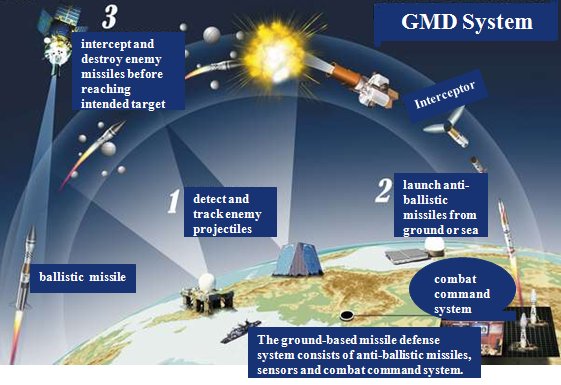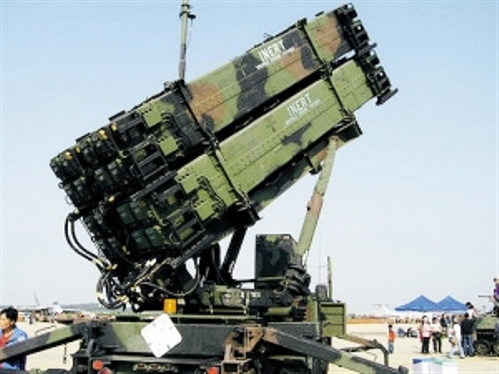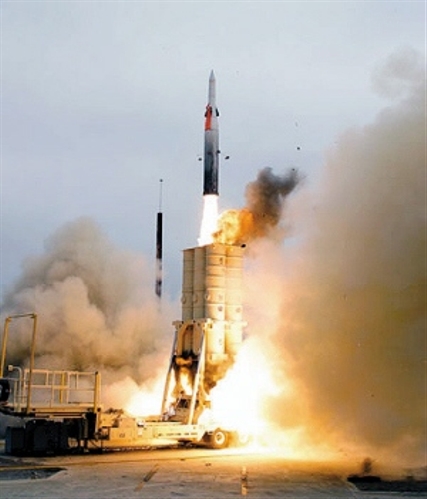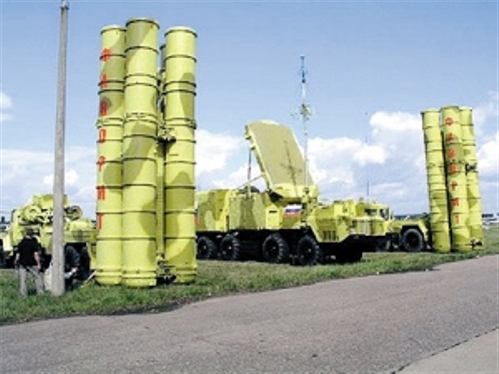HOME >> CHINA
China carries out land-based mid-course missile interception test
Source:Globaltimes.cn Published: 2013-1-28 17:50:00
| Editor's Note |
China again carried out a land-based mid-course missile interception test within its territory on January 27, according to the Information Bureau of China's Defense Ministry.
"The test has reached the preset goal," an official with the bureau said, adding that the test is defensive in nature and targets no other country.
It has been the second time that China announced such kind of missile test. A similar anti-missile interception test was successfully conducted on January 11, 2010.
Such tests, which involve highly complicated technologies in detecting, tracking and destroying a ballistic missile flying in the outer space, have only been tried before by the United States and Japan.
Significance:
The success in the anti-missile test, together with a string of other military equipment progress including the sail of China's first aircraft carrier and the test flight of a giant airfreighter, has demonstrated the country's fast-growing ability to defend its own national security and deter any possible threats.
| Latest News |
| Xinhua/huanqiu.com, Jan. 28, 2013: China carries out mid-course missile interception test China conducted missile defense tests in Northwest China’s Xinjiang Uyghur Autonomous Region on January 27, possibly creating a light show of rings and halos that was captured and circulated online. | |
| CNTV, Jan. 28, 2013: China conducts missile interception test China’s Ministry of National Defense says the country has conducted a land-based mid-course missile interception test on January 27 within its territory. It said the test is defensive and aimed at no particular country. | |
| huanqiu.com, Jan. 28, 2012: US announces successful missile test The US military says that the nation has successfully carried out an anti-missile test flight on January 26 in an air force base in California since its last similar testing failed in December 2010, according to the nation’s Missile Defense Agency. |
| Infographic |

The mid-course interception missile is actually comprised of a large booster rocket and interception warhead. The booster is like a carrier rocket, which sends the warhead into the atmosphere while the warhead of the mid-course interceptor is the equivalent of a “small missile”.
This “small missile” is equipped with dynamic, tracking and target recognition systems. The dynamic system drives the warhead and locks its target; the guidance system compiles its targets data, especially infrared signature. These systems track and identify the target, ultimately guiding the warhead to intercept the oncoming projectile.
The interception system is made up of a booster rocket and warhead, the latter of which is more difficult to develop. In order to reduce its size, the structure was designed to be as small as possible. Since accuracy is of the utmost importance, the guidance system is highly sensitive to movement and finely tuned to maintain a lock on its target.
Employing a fast-burning conflagrant booster rocket is necessary in order to deliver the warhead into the atmosphere as rapidly as possible. However, maintaining accuracy at such high speeds is very demanding. If the margin of error goes beyond the comfortable range of the guidance system, the missile may fail to reach its target.
Click to read more>>>
Source: Xinhua
| Comments |
Some expert opinions have related the Chinese missile experiments to the US arms sales to Taiwan while some web users rank it alongside China's atomic test.
It is understandable that some in the international community would speculate what China would do with these technologies. Some may even take these moves as proof for the ill-grounded "China threat theory."
China has maintained that these military advancements are purely defensive in nature, and has no specific targets. The speedy disclosure to the public of such an important move has also testified to the country's increasing transparency in military affairs.
Chinese media digest: China missile defense test successful
The military expert Yin Zhuo said in a CRI Online interview that the success of this test illustrates how China’s missile defense capabilities have greatly improved.
Yin also pointed out that the US intentionally conducted the test on the same day because they were able to make arrangements after receiving reports of China’s tests due to the time difference.
Social media comments:
@不疾而速ing: International political strategy is a bigger issue than developing advanced warfare. China’s strategy lacks competitive ideas because it is deeply influenced by Confucian philosophy.
@够瘦: The function of the missile interception test focuses more on deterring possible threats.
@tiny-king: Different countries may have different interpretations of the test, but many countries may share the same opinion. We can develop advanced technology but should be cautious of not getting caught up in an arms race. The former Soviet Union is an example.
China tested emerging military technology aimed at destroying missiles in mid-air after an initial test in 2010, state media said on January 27, in a move that will unnerve its neighbours.
| Photos |
Major missile defense systems around the world
 |
 |
 |
| Patriot Advanced Capability-3 (PAC-3) missile air defense system, US | Arrow 2, Israel |
S-400 Triumph Air Defence Missile System, Russia |
| Related Reports |
US media speculates over China's ASAT test
Russia eyes additional measures to counter US anti-missile threat
Anti-missile interception builds shield for China's defense
Russia-US talks on anti-missile deployment in stalemate: defense official
Iran can make US anti-missile systems 'ineffective': commander
Posted in: Military